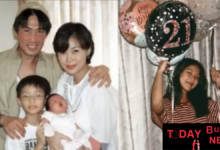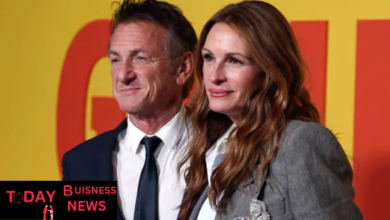The Evolution of Drake Album Covers A Visual Journey

Introduction
Drake Album Covers is one of the most influential artists in modern music, known not only for his genre-blending sound but also for his carefully curated visual identity. Over the years, his album covers have played a crucial role in shaping his brand, reflecting his artistic growth, and resonating with fans worldwide. Each cover tells a story, setting the tone for the music within. From minimalist designs to thought-provoking imagery, Drake Album Covers have evolved significantly, leaving a lasting impact on hip-hop culture. In this article, we’ll explore the evolution of Drake’s album covers, analyzing their significance and how they mirror his musical journey.
The Early Years: Establishing a Visual Identity

“Thank Me Later” (2010) – A Minimalist Approach to a Debut Album
Drake Album Covers debut studio album, Thank Me Later, featured a simple yet striking black-and-white portrait. The album cover reflected his serious and contemplative side, setting the stage for an introspective project. This minimalist aesthetic allowed listeners to focus on the music and lyrics rather than being distracted by an elaborate visual concept. The subdued color palette and direct eye contact suggested confidence, yet also a sense of vulnerability—two themes that would continue to define his artistry.
“Take Care” (2011) – The Moody and Opulent Aesthetic
With Take Care, Drake Album Covers took a more artistic and emotionally charged approach to his album cover. Seated at an ornate table with a gold goblet and candle, he exuded a sense of wealth, solitude, and melancholy. The dimly lit setting and rich textures conveyed themes of success, loneliness, and introspection. The cover perfectly complemented the album’s themes of love, fame, and the burdens of success, making it one of his most memorable visuals.
“Nothing Was the Same” (2013) – The Iconic Profile Artwork
One of Drake Album Covers most recognizable album covers, Nothing Was the Same, featured a side-profile painting of his younger self juxtaposed against an ethereal blue sky. The cover symbolized growth, transformation, and nostalgia. The contrast between his younger and present-day self visually encapsulated the album’s themes of evolution and self-reflection. This artistic approach showcased his deeper connection to storytelling through visuals.
The Transition to Iconic Imagery
“If You’re Reading This It’s Too Late” (2015) – A Cultural Phenomenon
Breaking away from traditional album covers, Drake Album Covers opted for a raw and handwritten-style design for If You’re Reading This It’s Too Late. The bold, scrawled font on a plain white background became an instant cultural phenomenon, inspiring memes and copycat designs. The minimalistic cover aligned with the album’s surprise drop and its aggressive, unfiltered tone. This unconventional approach reinforced Drake’s ability to set trends rather than follow them.
“What a Time to Be Alive” (2015) – The Diamond-Studded Collaboration Cover
A collaborative project with Future, What a Time to Be Alive featured a striking image of a diamond-filled texture. The cover emphasized themes of luxury, success, and opulence, reflecting both artists’ rise to prominence. The simplicity of the design allowed the focus to remain on the music while subtly reinforcing their status as hip-hop’s elite.
“Views” (2016) – The Toronto Skyline and Evolving Branding
For Views, Drake Album Covers embraced his Toronto roots, featuring himself perched atop the CN Tower. The image became instantly iconic, reinforcing his identity as the city’s biggest musical ambassador. The dramatic, almost surreal composition symbolized his elevated status in the industry. The cover’s muted tones and expansive skyline highlighted his journey from local rapper to global superstar.
Experimentation and Artistic Storytelling
“More Life” (2017) – The Vintage Photo Aesthetic
Drake Album Covers More Life took on a more personal touch with a vintage-styled cover featuring a photograph of his father, Dennis Graham. The image, with its nostalgic color grading and traditional aesthetic, reflected the album’s theme of celebrating life, culture, and heritage. The warm, inviting design resonated with fans, offering a sense of intimacy and personal storytelling.
“Scorpion” (2018) – The Monochromatic Self-Portrait
Scorpion featured a simple black-and-white portrait of Drake Album Covers, accompanied by his signature. This direct and unembellished design signaled an era of self-reflection and a return to raw authenticity. The choice to keep it monochrome aligned with the album’s introspective themes and the duality of its two-part structure.
“Certified Lover Boy” (2021) – The Controversial Emoji Cover
Drake Album Covers Certified Lover Boy sparked widespread discussion with its unconventional cover featuring 12 pregnant woman emojis. Designed by British artist Damien Hirst, the cover was divisive, with some praising its humor and boldness, while others dismissed it as lazy. Regardless of opinions, it achieved its purpose—grabbing attention and fueling discussions before the album’s release. The meme-worthy design reinforced Drake’s ability to control cultural narratives through visual media.
Recent Releases and the Future of Drake’s Cover Art
“Honestly, Nevermind” (2022) – The Unexpected Neon Text Aesthetic
Breaking away from conventional designs, Honestly, Nevermind featured a neon-style font against a dark backdrop. The minimalistic, electronic-inspired aesthetic mirrored the album’s unexpected shift toward house music. The cover aligned with the project’s experimental nature, signaling a departure from traditional hip-hop elements.
“Her Loss” (2022) – The Bold Artistic Direction
Drake Album Covers Her Loss, a collaboration with 21 Savage, showcased a striking portrait of model Qui Yasuka. The intimate, almost candid photo broke away from typical album cover norms, emphasizing authenticity and beauty in rawness. The image choice highlighted Drake Album Covers continuous push to challenge expectations in album artwork.
The Future of Drake’s Album Covers
Given Drake’s history of innovation, future album covers will likely continue to push boundaries. Whether through minimalist designs, high-art collaborations, or unexpected imagery, his visual identity will remain a central part of his brand. Fans can expect more thought-provoking and conversation-starting covers in the years to come.
Conclusion
Drake’s album covers serve as visual extensions of his musical evolution. From the introspective minimalism of Thank Me Later to the bold and provocative choices of Certified Lover Boy, each cover tells a story reflective of his artistic journey. His ability to blend personal narratives with striking visuals has cemented his place as a trendsetter in both music and design. As he continues to redefine hip-hop culture, one thing remains certain—his album covers will continue to be as impactful as his music.
FAQs
1. What is Drake’s most famous album cover?
Drake’s Nothing Was the Same and Views are among his most iconic covers due to their striking visuals and deep symbolism.
2. Who designs Drake’s album covers?
Drake collaborates with various artists and designers, including Damien Hirst and Theo Skudra, for his album artwork.
3. Why did Drake choose emojis for Certified Lover Boy?
The emoji-based cover was meant to be humorous, controversial, and conversation-starting, aligning with the album’s themes.
4. What inspired the Views album cover?
The Views cover was inspired by Drake’s love for Toronto, emphasizing his connection to the city.
5. How do fans react to Drake’s cover art?
Reactions vary, but his covers consistently spark discussions, memes, and deep analysis in pop culture.
6. Are there hidden messages in Drake’s album covers?
Yes, many covers include symbolic elements reflecting themes of success, introspection, and transformation.





